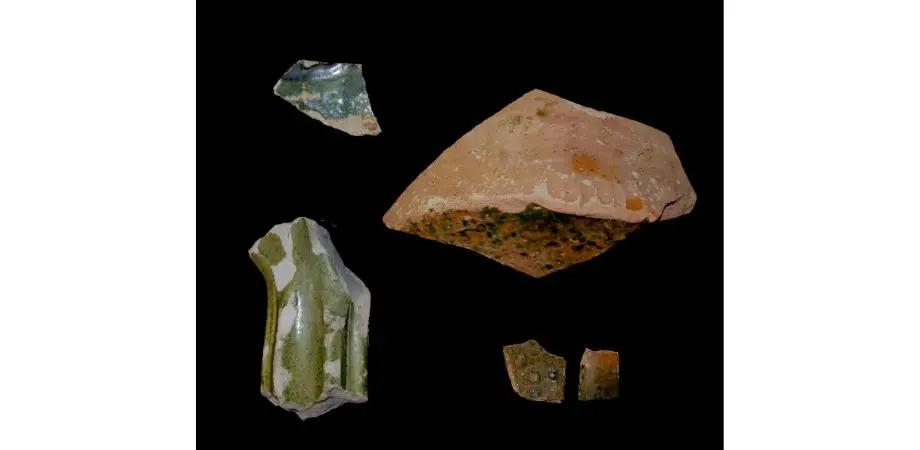Dating to the 13th–14th century, both sherds show the characteristic green glaze of the ware and represent standard forms.
Pottery in medieval Scarborough
Pottery production was highly influential in the economy of medieval Scarborough, with the quality of the clay available locally ensuring the success of this popular ware. As Scarborough was a port, the ware was exported widely and it achieved national and international distribution, with it being distributed as far as Scandinavia. Foreign merchants visiting the port and attending local markets could buy the ware to take home, and local merchants could buy the ware both to use and to trade on their travels abroad. Most types of medieval wares did not achieve such dispersal and often catered only to local needs, making Scarborough ware an anomaly of the material and time.
Who did the pottery belong to?
Kilns connected to Scarborough ware production have been recovered in the vicinity of Scarborough Castle, indicating that the ware may have been serving high-status individuals. This theory is supported by the fact that the ware has also been found around other local castles, such as Ayton Castle, and at Abbeys such as Rievaulx and Whitby in Yorkshire. In addition, because many of the items produced in Scarborough ware imitated those made of metal, it is possible the product also catered to those who could not afford metal objects. This suggests that the ware was utilised by a wide spectrum of society during the medieval period.
What else was produced in Scarborough?
Many vessel types were produced in Scarborough ware including jugs, aquamaniles (jug-like vessels in the shape of humans or animals that often held water), skillets, dishes, bottles, lamps and more. One of the examples shown here includes a strap handle that probably came from a jug. The base, also probably from a jug, is glazed on the underside (which is unusual) and shows a ‘pinching’ design typical of the ware and period. Often Scarborough ware vessels were elaborately decorated, displaying applied face masks (incised human faces often with a beard) and armoured figures on so-called ‘knight jugs’.
There is some controversy surrounding the dating of Scarborough ware; early production dates range from 1130s to 1250s. It is generally agreed, however, that production ceased in the mid- to late 14th century. Regardless of the start date, production seems to have lasted at least a century, and this was probably due to the high demand for the pottery both nationally and internationally.





